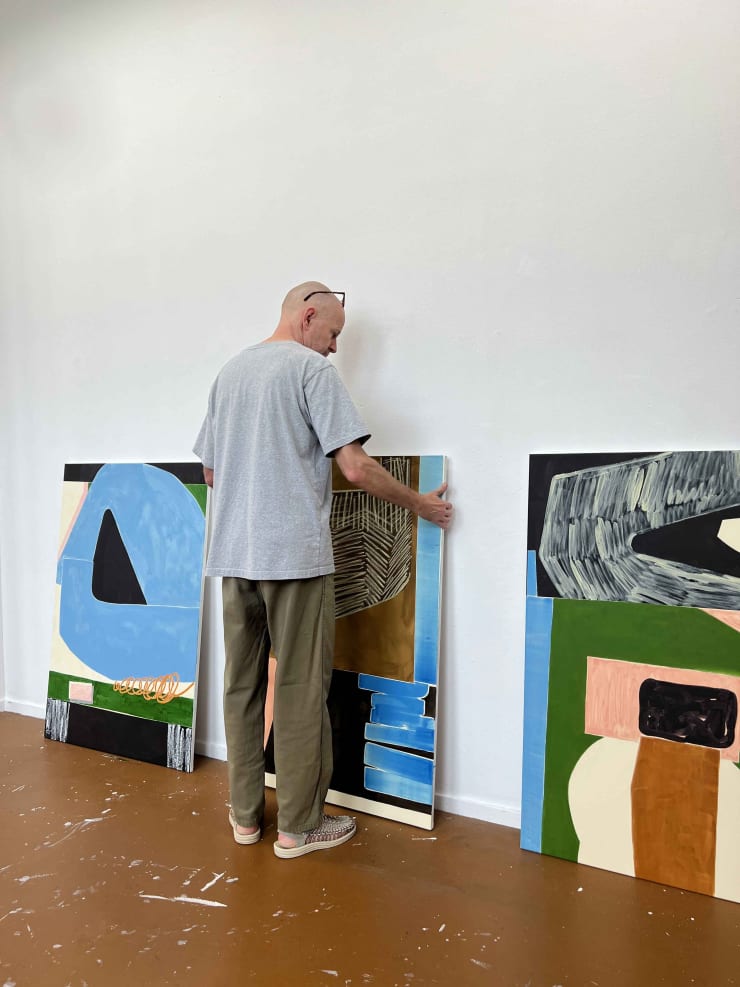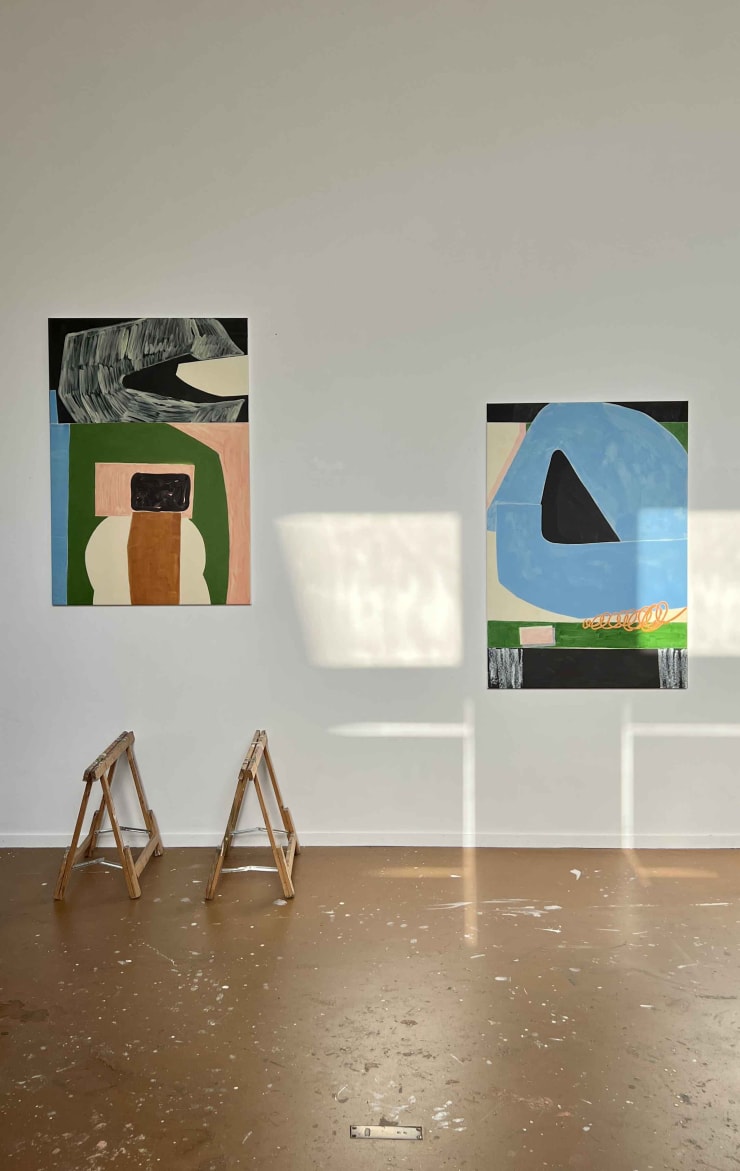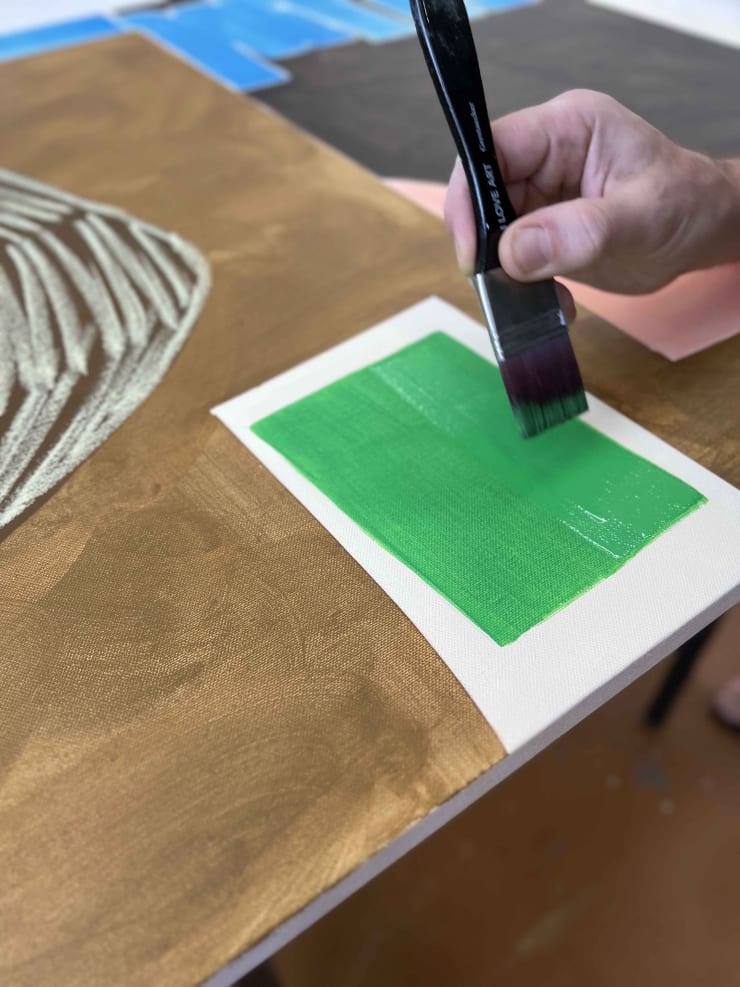Masja and Serge live and work together in Rotterdam, Netherlands where they have developed a successful contemporary art practice under the name ‘Marie Bernard.’ For the current group exhibition, The Land of Wonder at Otomys gallery, Marie Bernard have created two large canvas artworks, which is their first foray into painting. These artworks examine ‘Wonder’ as a relational experience to nature, one another and the architecture that surrounds them.
OTOMYS: As collaborators you talk about the significance of evaluating each other’s work. How do you approach evaluation, do you reference a set of criteria or framework?
Marie Bernard: As life partners since art school, we have developed a critical language about each other's work. The process of making and indeed evaluation, happens very intuitively, it is a journey of reduction and achieving clarity rather than a mission to keep adding and potentially overwhelming the composition. Much like making a sauce: we aim for optimal taste and balance. Together we are responsible for safeguarding the quality of the ever-growing collection of Marie Bernard art.
Our artworks hold a primordial complexity to them. We work hard to achieve simplicity and ease in the work, much like good dancers make a complex choreography look effortless, without removing the poetry. We approach creativity with a sense of looseness, simplicity, layering and duality. The objective is to create an entire world onto its own which answers only to laws of its own.
OTOMYS: You are driven by form and colour, but we also know that you are guided by values, theories, and ideologies. Can you expand on this?
Marie Bernard: Marie Bernard’s origin is with pieces of coloured paper and a pair of scissors. We honour the symbiosis between our combined mental and physical effort. On the one hand what we do is truly a thing of the mind, there is a harmony between the sub conscious and the conscious. On the other hand, the process of creating connects us to generations of artists and craftspeople before us.
In terms of inspiration, we draw from nature, architecture, artefacts, art, and design to create art that engages the viewer not only on a cerebral level but also a gut level. We also embrace the ideology of holding our beliefs lightly. Doubt is at the very basis of life and our artistic practice.
OTOMYS: Is there are personal narrative within your practice?
Marie Bernard: Our personalities permeate our practice. Because we've been partners for such a long time something one could call a collective memory has been built over the years. A shared memory of visual experiences, but also of shared values.
Marie is highly susceptible to all imagery around her, architecture, people, clothing, vehicles, and advertising. However, it's the negative space between shapes and objects which really draws her attention and is reflected in our art. In German they're called Zwischenraumgespenster which means as much as 'phantoms that live in the in between-space'. It is really these phantoms that catch the eye and introduce the viewer to the rest of the work.
Bernard brings to our practice a deep love for nature and a predisposition for monumental shapes and imagery. Since he was young, he has been enthralled by nature; the sunlight piercing through the forest foliage, or an almost metaphysical experience when gazing at the ceiling an old church during mass. In his work he has a desire to explore these emotions.
OTOMYS: How do you view your artwork in relation to the environment; this could be a built, biological, creative, or collaborative?
Marie Bernard: Nature inspires us. During our walks we often move silently toward the same tree bark, fungi, or ferns. Nature’s colours and organic forms often populate our work. Whilst the city is currently the environment where we live and work, it is a valuable biotope of creatives with whom we share thoughts and experiences. And finally, there is Marie Bernard, a mini-cosmos in its own right. An environment to which new variables are constantly being introduced. It sometimes feels like a carefully orchestrated choreography, a pas de deux of sorts where each artist relies heavily on the other to create the final art form.
OTOMYS: You talk about your practice in the language of seasons. What does this mean to you, and how does your artwork for The Land of Wonder fit into the cyclical rhythm of your practice?
Marie Bernard: There is a cyclical rhythm in the sense that wherever our art takes us, we always return to the well, which in our case is the paper collages from where we start. For the paintings Hive and Lagoon which feature in The Land of Wonder exhibition at Otomys contemporary art gallery we started by making smaller collages. Next, we reframed these into smaller collages, looking for new compositions which were translated onto canvas. These collages may appear as preliminary sketches, however they are the first embodiment of an idea from beginning to end.
November 15, 2023





